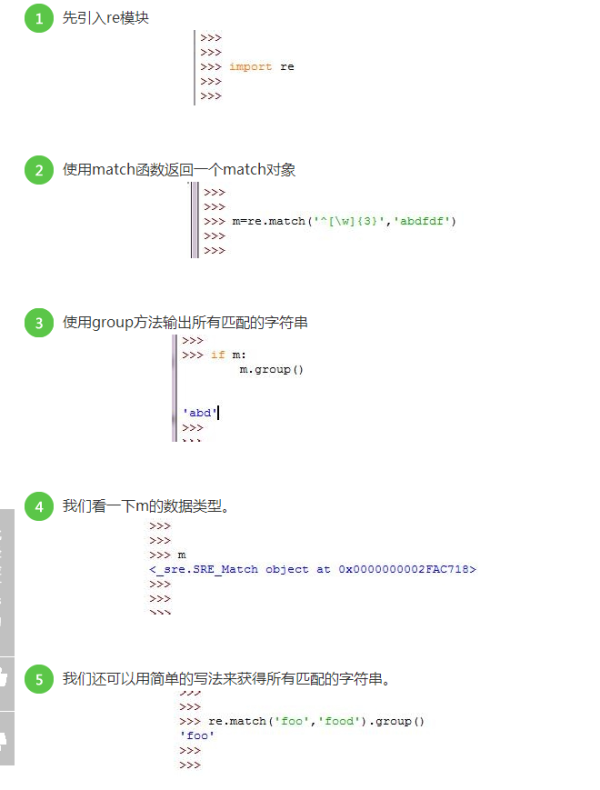这篇文章主要介绍了Python中正则表达式match()、search()函数及match()和search()的区别详解的相关资料,需要的朋友可以参考下
match()和search()都是python中的正则匹配函数,那这两个函数有何区别呢?
match()函数只检测RE是不是在string的开始位置匹配, search()会扫描整个string查找匹配, 也就是说match()只有在0位置匹配成功的话才有返回,如果不是开始位置匹配成功的话,match()就返回none
例如:
#! /usr/bin/env python # -*- coding=utf-8 -*- import re text = 'pythontab' m = re.match(r"\w+", text) if m: print m.group(0) else: print 'not match'
结果是:pythontab
而:
#! /usr/bin/env python # -*- coding=utf-8 -*- # import re text = '@pythontab' m = re.match(r"\w+", text) if m: print m.group(0) else: print 'not match'
结果是:not match
search()会扫描整个字符串并返回第一个成功的匹配
例如:
#! /usr/bin/env python # -*- coding=utf-8 -*- # import re text = 'pythontab' m = re.search(r"\w+", text) if m: print m.group(0) else: print 'not match'
结果是:pythontab
那这样呢:
#! /usr/bin/env python # -*- coding=utf-8 -*- # import re text = '@pythontab' m = re.search(r"\w+", text) if m: print m.group(0) else: print 'not match'
结果是:pythontab
Python中正则表达式match()函数
如果不创建pattern对象,我们使用match函数可以直接进行正则表达式的匹配,在我看来这种方式更简洁,不过不适合大型程序的编写,后期维护可能会产生困难,不过编写一些小脚本完全可以胜任。

Python中正则表达式search()函数
search函数和match函数有点类似,都可以匹配模式,但是match和search函数也有区别,而且区别很大,match函数只能够字符串的开始位置开始匹配,而search是可以匹配字符串的任意位置,但也是返回找到的第一个匹配的模式。我们通过例子来了解这俩之间的区别吧。

以上就是Python中正则表达式match()、search()函数及match()和search()的区别详解的详细内容,更多请关注0133技术站其它相关文章!







